
Beautiful Gardens ... Buzzing with Wildlife

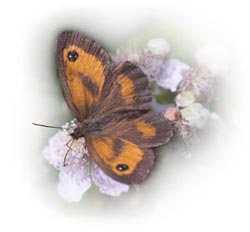
| PONDS +++ MEADOWS +++ WOODLAND +++ HEATHLAND | ||
A Celebration of Ponds |
||
| Ponds attract wildlife. Birds, mammals and all manner of invertebrates visit water to drink and bathe, find food and shelter. On top of that a pond creates it's own wildlife, and dragonflies, frogs, toads and newts, and another miriad of invertebrates will take up residence. Providing a pond in your garden is a no-brainer when it comes to wildlife. |  |
|
| Here are some examples of ponds, in the wild and in garden situations to wet your appetite and inspire you to put in a pond that will increase the biodiversity of your garden. Wherever you are in the country, whatever the type of water and soil you have, your pond will be an asset to your garden and to the local wildlife. | ||
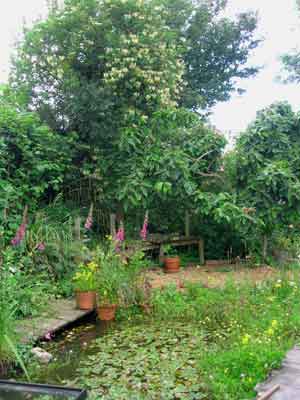 |
||
| A well-vegetated garden pond, two or three years after making. This pond is typical of most ponds created with a flexible liner. It is not deep, perhaps 40 cm at most and shelves gently out to the gravel area beyond. By mid-summer the pondweeds cover the surface almost providing shade and landing places for dragonflies and damselflies, there are a good variety of marginal plants, and the surounding planting, hedges, shrubs and climbers give birds somewhere safe to gather while waiting for their turn for a bath. | ||
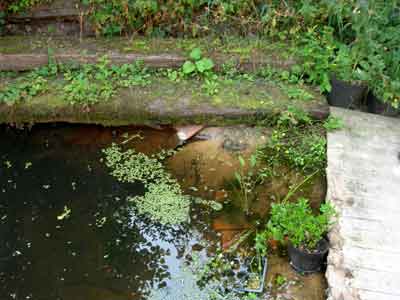 |
||
| This corner of a garden pond has just been planted. Old railway sleepers were used to good effect along one side, where the ground sloped up. The liner has been covered with a thin layer of childrens play sand. The plants are anchored with stones, bricks and tiles, they will grow fast enough, the addition of soil only creates high nutrients in the water, and the possibility of algal blooms. | ||
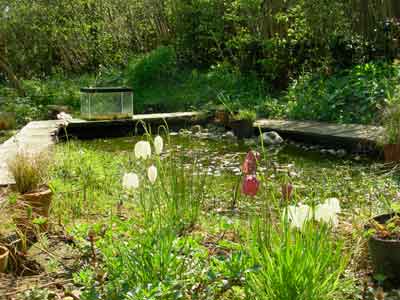 |
||
| In spring these Snake's-head Fritillaries Fritillaria meleagris appear in a wetland area created separate from the pond by laying an impervious layer under the soil and punching one or two holes in for some drainage. | ||
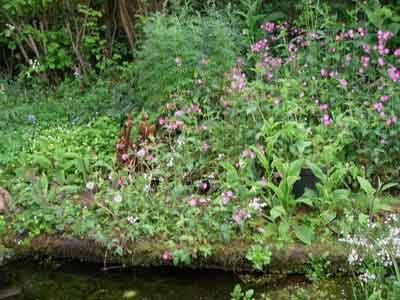 |
||
| In spring this pond has a real woodland feel, as Red Campion Silene dioica, Woodruff Galium odoratum, Bluebell Hyacinthoides non-scriptus, and Cuckoo flower Cardamine pratense bloom. | ||
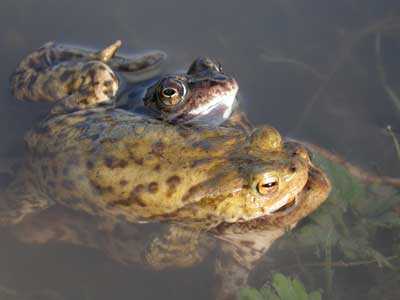 |
||
| A Common Frog is mustling in on the mating Common Toads. You can clearly see the difference in the head shapes and skin of the two species | ||
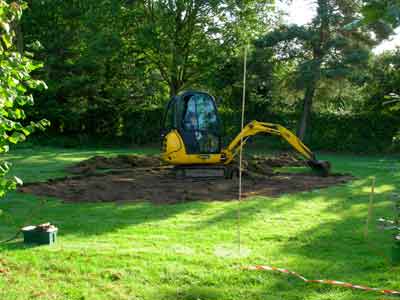 |
||
| For a pond of any size it is much easier to employ a mini-digger and driver. This pond is 10 m by 20 m and on a slightly sloping site. A skilled driver will be able to create your pond to your specifications in no time. | ||
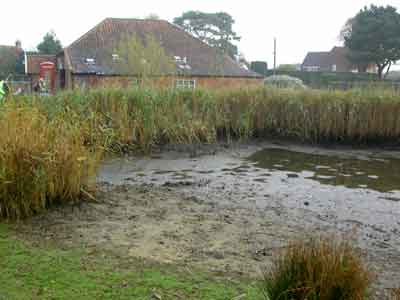 |
||
| This village pond, suffered from dense reed growth all around and had become so shallow that it mostly dried up in summer. It underwent a transformation with the help of grants from Awards for All and NEWS. | ||
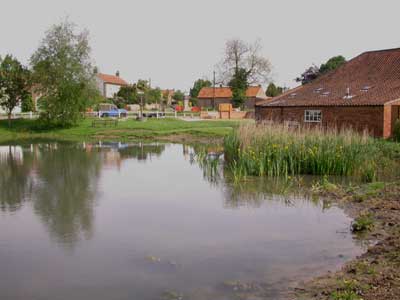 |
||
| This pond was re-lined with clay and allowed to fill with rainwater. The small reedbed was retained and allows water draining from the road to filter amongst the reeds and remove pollution before entering the pond. | ||
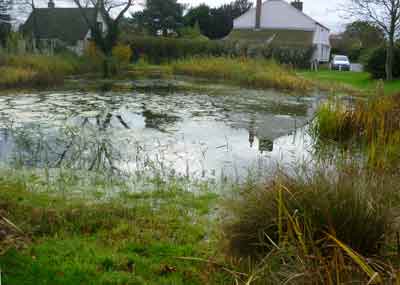 |
||
| The village pond four years on. It has been a great success, more frogs, toads and newts are breeding than before, a moorhen rears several young each year and ducks visit in the early mornings and evenings. The surrounding vegetation attracts many insects and other invertebrates, and it is quite a hotspot for dragonflies. | ||
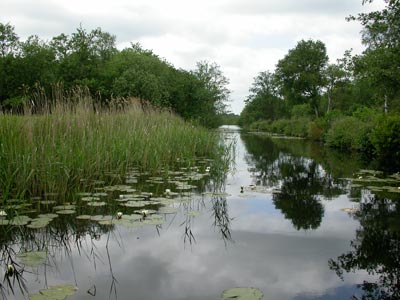 |
||
| One of the dykes beside Cockshoot Broad in Norfolk. Beautifully clear water, and water lilies define this classic broadland scene. | ||
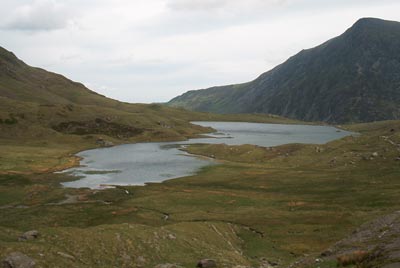 |
||
| On a completely different level, Llyn Idwal lake at Cwm Idwal National Nature Reserve in North Wales, is formed in a hanging valley by glaciation and at first glance would seem barren. However the mesotrophic waters - with low nutrients - make it one of the richest lakes in Britain containing a high proportion of nationally scarce and rare aquatic plants. | ||
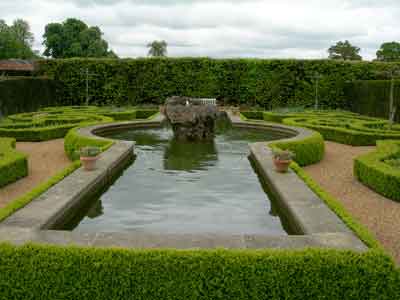 |
||
| This pond may also seem barren, and it most likely is. Birds may drink and bathe at the fountain, but if it's wildlife you are looking for, try not to create a formal pond with high sides. | ||
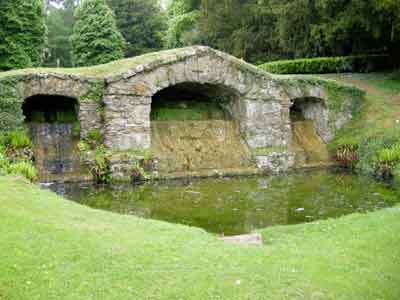 |
||
| This formal pond at Rousham Gardens, surrounded by grass with the water full of aquatic plants, was also full of Great Crested newts, as was the smaller pond in the flower garden. A great place to watch these animals. | ||
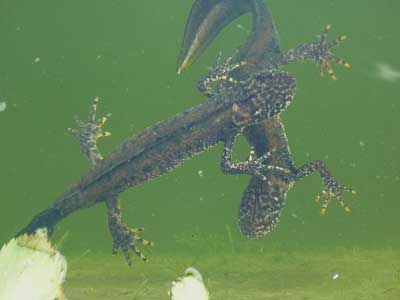 |
||
| Great Crested Newt Triturus cristatus at Rousham | ||
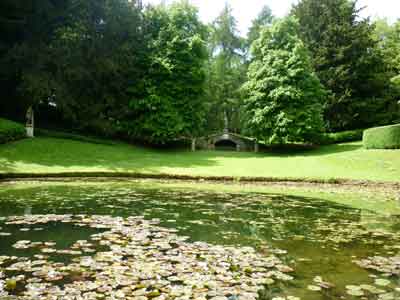 |
||
| This larger pond at Rousham with its good covering of water lilies and other aquatics was visited by many damselflies and dragonflies. | ||
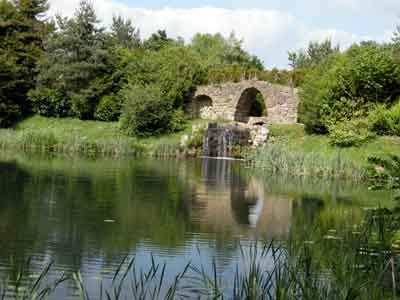 |
||
| Another larger pond, this time at Stowe had good marginal vegetation and the surrounding trees meant small birds and mammals could easily access the waters edge. | ||
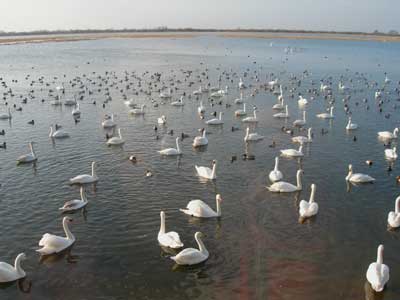 |
||
| Quite a different expanse of water again. Here at Welney Wetland Centre, the flooded meadows in winter become a mecca for up to 9000 migrating swans and ducks from the arctic, including Whooper and Bewick's swan. Difficult to re-create at home perhaps but remember seasonally flooded areas and equally areas that dry up in summer are very important for invertebrates, making the shallow margins of your pond the most biodiverse areas. | ||